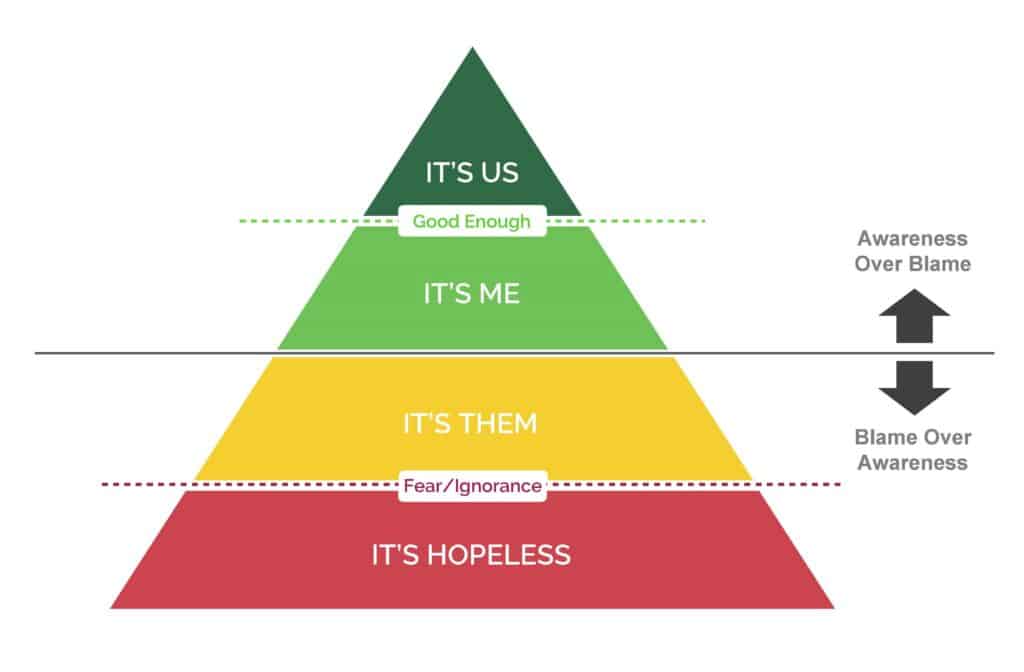Do you ever find yourself reliving the same challenges over and over at work, just like Phil Connors in the iconic movie “Groundhog Day”?
You always seem to be treading water, trying your best to keep your head up and sometimes it slips just a tiny bit below the surface and that sets you back just as many days as you were ahead last week. Your team is also treading water and frankly you’re getting mediocre results. As this cycle repeats itself time and again, your frustration grows: no one is taking the level of accountability that you believe they should, and no matter what you do, nothing really gets better.
The feeling of stagnation and frustration is uncomfortably familiar. Many leaders we work with feel stuck in “Groundhog Day.” Not because they lack the desire to change things, but because they are unclear on the root of the problem, the problems are overwhelmingly large, and let’s be honest… blame culture is rampant. It’s not me, it’s them.
“Them” is anything you can point your finger at, other than yourself: Them is:
- Your team not taking adequate accountability
- Your team shying away from challenging goals
- Other leaders withholding information
- Other teams not communicating proactively
- A lack of clear direction from the top
- Generally anyone not doing what they’re supposed to be doing
From our experience working with organizations to accelerate performance, we’ve identified a performance zone pyramid. Organizations that continuously cycle through the same issues day after day, without moving dial are in the “Amber Zone.” In this zone, leaders are trying hard, but feeling stuck, and therefore end up looking around to see who else might be responsible for their current mediocre performance. They play the “Blame Game.”
In these organizations, it’s easy to point fingers at where everyone else is failing. And it can feel like an overwhelming task to effect any change at all. After all, you know that at the end of the day you can’t control other people.
What if I told you that instead of talking about who or what is at fault, the more impactful question to ask is this: What role do I play in this and what will I do about it?
Moving beyond a place of blame, and into a state of awareness, is the first step to move past the Groundhog Day cycle and gain momentum to take measurable steps forward.
Awareness comes from self-insight, which is a foundational element of all our programs. How are you supposed to improve if you don’t know how you’re perceived by or impacting others? How are you supposed to know what would be more effective? It’s hard to read the label of the jar you’re in.
With self insight, you can identify the role you play and start to shift the culture. And it doesn’t take many leaders to start this small shift. In your pocket of the organization, you can identify:
- Which of my strengths elevate the team?
- Which of my strengths do I use in excess?
- What drains me that I’m completely ignoring but needs attention?
- What “weather system” do I create for my team?
- How does my love for debate/my conflict aversion/my realism/my optimism impact the team?
If you’re ready to move past Groundhog Day for good, reach out to learn more about how we can help you and your organization move beyond blame to awareness and collective impact.




